
The water surface of Doublet Pool vibrating. Credit: Jamie Farrell/University of Utah
The rhythmic beating of geysers at Doublet Pool provides insight into the changes in energy within the Yellowstone hydrothermal system.
As throngs of people gather around Old Faithful, eagerly anticipating its next eruption, a small pool located just north of Yellowstone National Park’s most famous geyser is putting on its own spectacular display with regularity. Unlike Old Faithful, Doublet Pool doesn’t erupt in a towering spout, but rather it pulsates with a rhythmic thumping every 20 to 30 minutes. The water in the pool vibrates and the earth trembles as the pool showcases its unique activity.
The regular thumping of Doublet Pool is not just a novel spectacle for visitors. A recent study conducted by researchers from the University of Utah has revealed that the time between each episode of thumping is a direct indicator of the amount of energy heating the pool from the bottom, as well as how much heat is escaping through the surface. Doublet Pool, the study authors conclude, serves as a sort of “thumping thermometer” for Yellowstone National Park.
“By studying Doublet Pool, we are hoping to gain knowledge on the dynamic hydrothermal processes that can potentially be applied to understand what controls geyser eruptions,” said Fan-Chi Lin, an associate professor in the department of geology and geophysics at the U and a study co-author, “and also less predictable and more hazardous hydrothermal explosions.”
The study is published in the journal Geophysical Research Letters.
Not exactly like a geyser
Doublet Pool is, as the name implies, a pair of hydrothermal pools connected by a small neck. It would fit comfortably in one half of a tennis court. It’s situated on Geyser Hill in Yellowstone National Park, across the Firehole River from the hotels, visitor centers, and parking lots that surround Old Faithful.
“We knew Doublet Pool thumps every 20-30 minutes,” Lin said, “but there was not much previous knowledge on what controls the variation. In fact, I don’t think many people actually realize the thumping interval varies. People pay more attention to geysers.”
The thumping, Lin said, which lasts about 10 minutes, is caused by bubbles in the plumbing system that feeds water, heated by a magma system beneath Yellowstone, to Doublet Pool. When those bubbles of water vapor reach the cool upper reaches of the hydrothermal conduit, they collapse suddenly. Thump.
The water surface of Doublet Pool vibrating. Jamie Farrell/University of Utah
A similar process happens in geysers and excites “hydrothermal tremor,” Lin said, but occurs deeper in the hydrothermal system, at depths of about 30-60 ft, and ends with the geyser releasing pressure through a narrow opening as an eruption. Doublet Pool does not have a plumbing structure that enables pressure accumulation and hence no eruption occurs. Also, scientific instruments placed in and around the pool aren’t at any risk of being regularly blown out.
So, to better understand how hydrothermal systems work, Lin and his colleagues, including Cheng-Nan Liu, Jamie Farrell, and Sin-Mei Wu from the U and collaborators from the University of California, Berkeley, and Yellowstone National Park, set up instruments called geophones around Doublet Pool in seven deployments between 2015 and 2021. In winter 2021 and spring 2022, with the permission of the National Park Service, they lowered temperature and water-level sensors into the pool itself. Then they watched, waited, and listened.
Like blowing on a pot of pasta
The researchers focused on the silence interval, or the time between periods of thumping. They found that the silence interval varied both year-to-year and also hour-to-hour or day-to-day. Their results suggest that different processes of adding or removing heat to the hydrothermal system are behind the variation.
In November 2016, the silence interval was around 30 minutes. But by September 2018, that interval had been cut in half to around 13 minutes, and by November 2021, the interval was back up to around 20 minutes.
What else was happening on Geyser Hill during those same times? On September 15, 2018, Ear Spring, which is 200 feet (60 m) northwest of Doublet Pool, erupted for the first time since 1957. After the eruption, the water in Doublet Pool boiled.
Yellowstone’s hydrothermal system is like an Instant Pot, building up heat and pressure leading up to eruptions of geysers and other features. The unusual behavior of Ear Spring, Doublet Pool, and other features suggests that in 2018 the heat under Geyser Hill may have been turned up more than usual. By 2021, like an Instant Pot on Natural Release, that heat and pressure had subsided and the silence interval at Doublet Pool had recovered.
The researchers also noticed that silence intervals varied from day to day, and even hour to hour. When they compared the weather conditions with the silence intervals, they found that wind speed over the pools was correlated with the silence interval. When wind speed was higher, the interval was longer. Nature was blowing over the top of Doublet Pool, cooling it off.
The team is still working to understand how the blowing wind at the surface of the pool impacts the heat at the bottom, but it’s clear that the wind removes heat energy from the water, just like blowing over a hot drink–or a pot of pasta about to boil over—cools it off.
“Right now, we are treating the pool as one whole system, which means energy taken away from the surface makes it harder for the system to accumulate enough energy to thump,” Lin said. “One possibility is that the pool is actively convecting so the cooling near the surface can affect the bottom of the pool in a relatively short time scale.”
Heat inputs and outputs
Using principles of heat transfer, the authors calculated the amount of heat and the heating rate needed to initiate thumping at Doublet Pool. Think again about blowing on a pot of pasta. You can prevent boiling over if you are removing heat (through blowing) at the same rate the heat is entering the pot.
“And as we know how to calculate the heat being removed from the wind,” Lin said, “we can estimate the heating rate at the base.”
The heating rate for Doublet Pool works out to around 3-7 megawatts of energy. For comparison, Lin said, it would take about 100 household furnaces burning at the same time to heat up Doublet Pool enough to thump. (This is also equivalent to more than $5,000 worth of energy daily, which highlights the potential of geothermal energy.)
Knowing that heating rate, scientists can use the silence interval as a measurement of how much heat is coming into the pool, since more heat means a shorter interval.
“A better understanding of the energy budget,” Lin said, “will also improve our understanding of how much energy from the Yellowstone volcano is released through these hydrothermal features.”
Reference: “Thumping Cycle Variations of Doublet Pool in Yellowstone National Park, USA” by Cheng-Nan Liu, Fan-Chi Lin, Michael Manga, Jamie Farrell, Sin-Mei Wu, Mara H. Reed, Anna Barth, Jefferson Hungerford and Erin White, 15 February 2023, Geophysical Research Letters.
DOI: 10.1029/2022GL101175
The study was funded by the National Science Foundation.

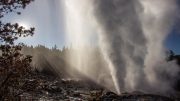
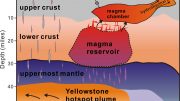
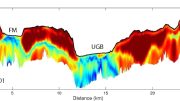
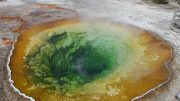
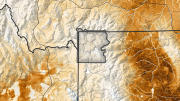
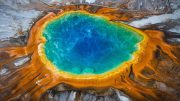


Be the first to comment on "The Thumping Thermometer of Yellowstone: Unique Pool Reveals Secrets of Hydrothermal System"